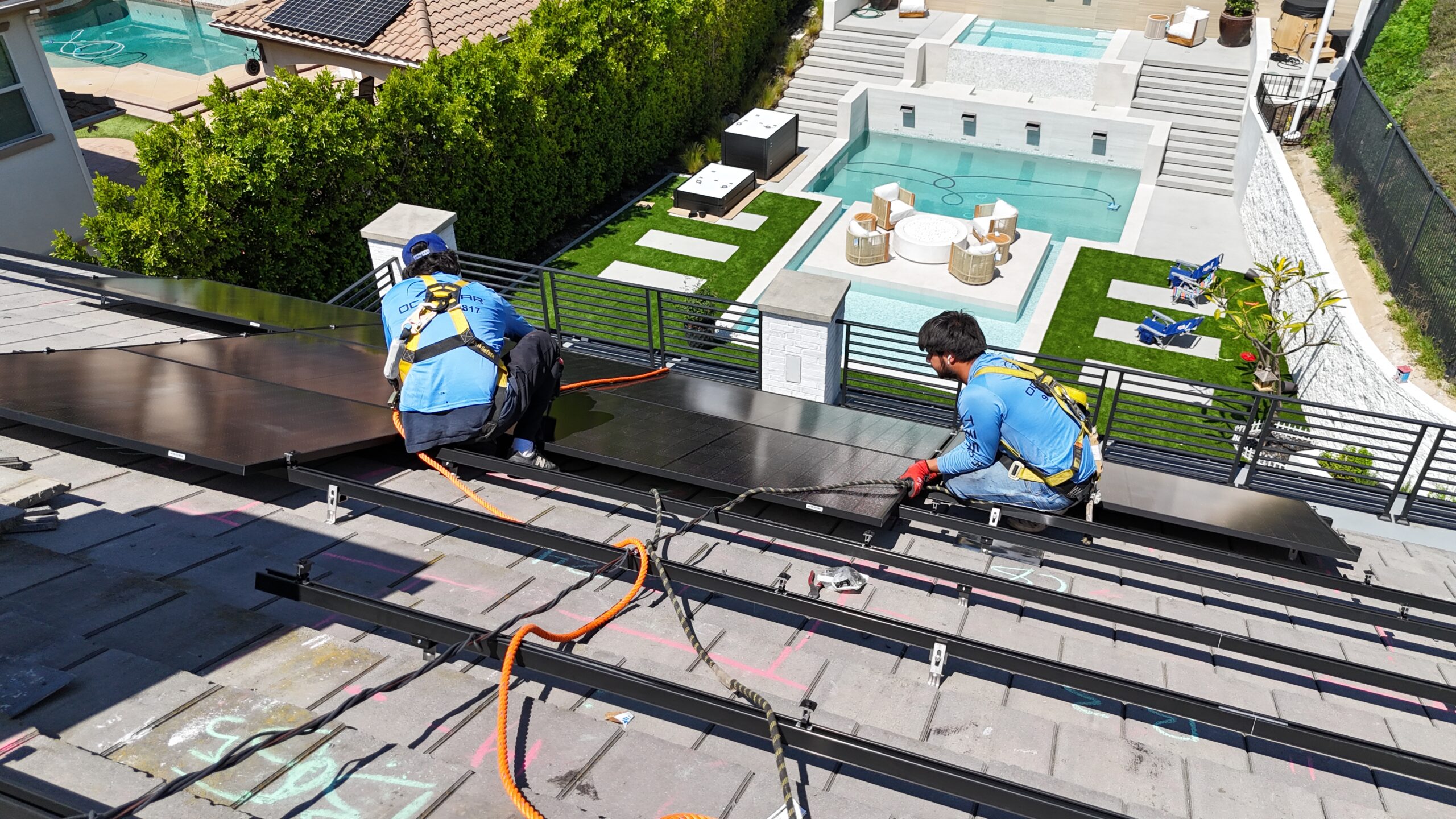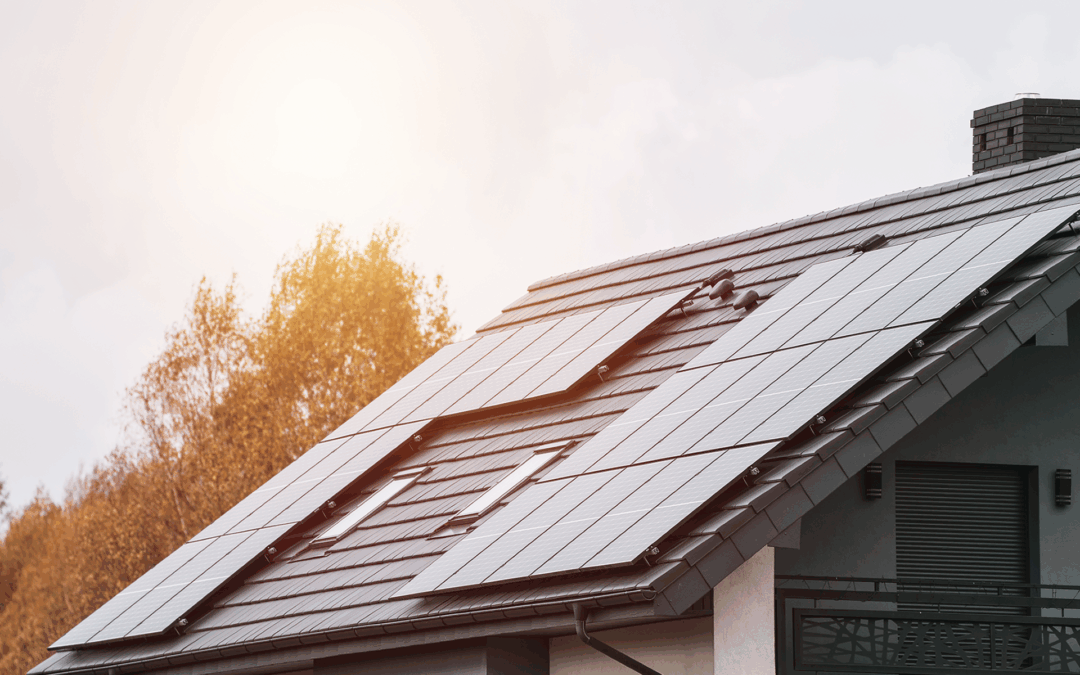As the days get shorter and the holiday season approaches, most homeowners are thinking about cozy nights and rising utility bills, not solar panels. But fall might actually be the smartest time of year to make the switch to solar. By acting now, you can take advantage of mild weather, prepare for utility rate hikes, and head into the new year with a home that runs more efficiently and affordably.
In this post, we’ll explore why autumn, particularly October, is the ideal season for solar installations.
Faster, Smoother Installation with Ideal Fall Weather

Summer heat can make rooftop installations challenging for crews, while winter rains create delays. Fall brings mild, predictable weather that allows for faster, safer, and more efficient work. This means your system can be installed without the risk of prolonged setbacks, helping you start saving sooner.
Homeowners also benefit from easier scheduling. Many solar companies experience a surge in demand in late spring and summer, which can lead to longer installation timelines. By taking action in October, you can avoid seasonal backlogs and ensure your project progresses at a comfortable pace.
And here’s another benefit of fall installations: the mild weather also helps protect your roof. Working in cooler conditions reduces the risk of materials expanding or warping, ensuring that your panels and roof seals last longer. It’s a small but meaningful detail that adds to the long-term durability of your investment.
The Smartest Time to ‘Right-Size’ Your System
Although energy bills spike in summer when air conditioners are running nonstop, fall offers a perfect planning window. With lower household electricity use, you have the opportunity to evaluate your energy patterns and size a solar system more strategically.
This is especially valuable for homeowners expecting changes in consumption, like buying an electric vehicle or adding appliances. By installing solar now, you ensure your system is ready to offset higher usage before next summer’s peak demand.
Another overlooked advantage is the ability to review your Green Button Data (the detailed energy usage information utilities provide). With this data, solar professionals can tailor a system to your exact energy habits. Conducting this analysis in the fall allows you to establish a right-sized system before your bills increase again in warmer months.
Lock in Predictable Costs: Beat the January Rate Hikes
Utility companies often announce rate increases toward the end of the year, which take effect in January. By going solar in the fall, homeowners can shield themselves from these increases and lock in more predictable energy costs before higher bills arrive.
In California, electricity rates have risen steadily over the past decade, with some utilities increasing rates multiple times in a single year. Installing solar before the new year means you won’t be caught off guard. Instead, you’ll begin the year with more control over your energy costs, regardless of how rates climb.
Solar doesn’t just lower bills; it provides stability. As utility rates continue to rise, the value of your solar investment grows over time, protecting you from future uncertainty.
Optimize Your Usage Before Summer TOU Spikes
In Southern California, time-of-use (TOU) rates are reshaping how homeowners pay for electricity. Costs rise in the late afternoon and evening, coinciding with the natural decline in solar production. By installing solar in the fall, you can explore pairing your system with battery storage before the next round of TOU rate adjustments.
Having your system in place ahead of summer gives you time to understand how it interacts with your household habits. By next year’s peak season, you’ll already know how to maximize solar production, store excess energy, and reduce reliance on costly utility power.
For example, homeowners with electric vehicles can use solar and storage to charge overnight, avoiding expensive peak rates. Families can also shift appliance use to daylight hours and rely on stored energy during evenings, reducing dependence on the grid. By starting this process in the fall, you have months to learn and optimize your system before next summer’s energy rush.
Build Energy Credits Before Winter

Installing solar in the fall allows you to start building credits through net metering before the shorter days of winter. Even though daylight hours decrease, Southern California’s climate still provides plenty of sunshine to generate excess energy during midday.
By going solar in October, you’ll already be banking credits to offset heavier evening and holiday usage in November and December. When family gatherings, holiday cooking, and colder nights drive up electricity consumption, your solar system will already be working in your favor.
This timing also helps smooth out the seasonal cycle of energy use. Instead of waiting until spring or summer to see meaningful savings, fall installations allow you to start strong, offsetting winter usage and carrying credits into the new year. Over time, this adds up to bigger long-term savings.
Conclusion: Fall Into Savings with Solar
While summer may feel like the obvious season for solar, October is one of the smartest times to make the switch. Mild weather creates ideal installation conditions, lower energy use allows for better planning, and installing before utility rate hikes ensures predictable bills. On top of that, you can build net metering credits for the holidays, prepare for time-of-use rates, and enjoy the added durability and efficiency that come from fall installations.
If you’re considering solar, don’t wait until your bills are at their peak. By acting this fall, you can position yourself for maximum savings, energy independence, and peace of mind.
Ready to take the next step? Contact OC Solar today for a free consultation and discover how going solar this October can set you up for long-term savings.

